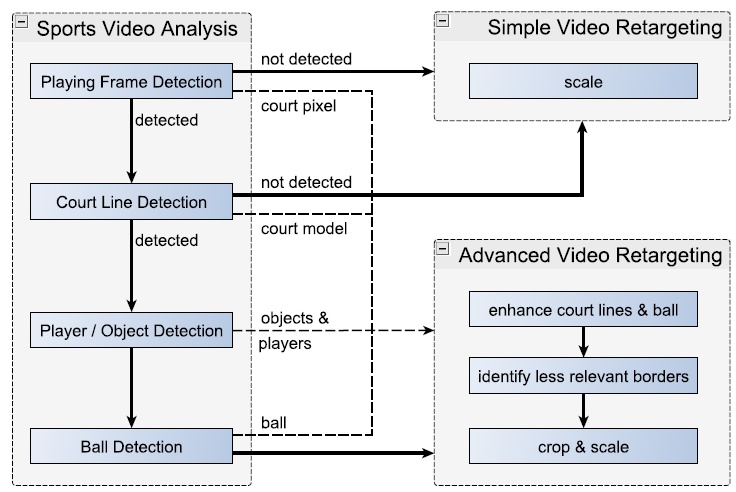Automatic Movie Content Analysis
The MoCA Project 
The MoCA Project
MoCA Project:
Analysis and Retargeting of Ball Sports Video
The quality achieved by simply scaling a sports video to the
limited display resolution of a mobile device is often insufficient. As
a consequence, small details like the ball or lines on the playing
field become unrecognizable. We present a novel approach to analyzing
court-based ball sports videos. We have developed new techniques to
distinguish actual playing frames, to detect players, and to track the
ball. This information is used for advanced video retargeting, which
emphasizes essential content in the adapted videos.
System overview
Our sports video analysis and adaptation system is based on four
modules which analyze a video and one additional module for video
retargeting (see the following figure). In a first step, the system
distinguishes playing frames from other frames. Additional modules
detect court lines, players, objects, and the ball. For each frame, the
components are run one after another. Only if a frame is processed
successfully in the current step, it is forwarded to the next module.
So, for example, if the court field is not detected in a frame,
algorithms to locate court lines or players are skipped. Previously
computed data is re-used wherever possible.
The adaptation of a frame depends on the results of the analysis. A
frame is scaled if no semantic information could be derived. Otherwise,
the advanced video retargeting module uses all available information to
adapt a frame.

The following figure shows exemplary intermediate results of the
processing steps. From left to right: court model, background image,
difference image, player and object segmentation.

Additional material
| Sports video adaptation results |
 |
|||
Download video Download presentation Download paper |
